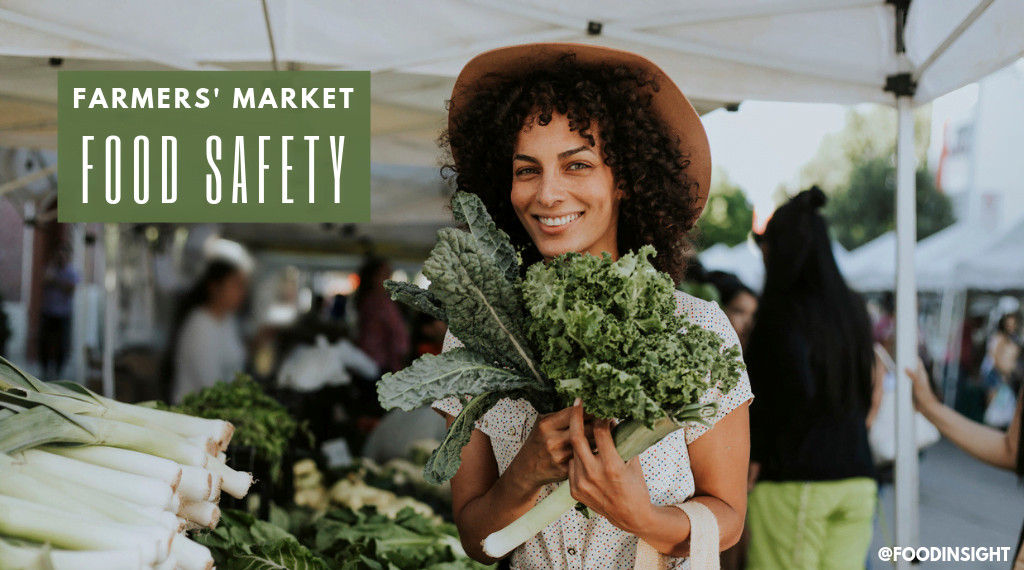With the ushering in of warmer weather and more sunny days come thoughts of fresh produce and access to many of our favorite fruits and vegetables from local farmers’ markets. These typically outdoor markets range in size, location and the different goodies they bring to local neighborhoods, and their appeal is undeniable—they’re at the center of many communities in the spring and summer and offer many nutritious and tasty foods. But because these foods can come from different sources, consumers should follow some general food safety guidelines when purchasing and eating them.
Remember these three safety tips in order to enjoy your farmers’ market finds the safe and healthy way:
Federal regulations see all farmers as equals, and so should you.
All farmers, local or long-distance, must follow United States Department of Agriculture (USDA), Food and Drug Administration (FDA) and Environmental Protection Agency (EPA) safety regulationsto grow and harvest crops. These guidelines govern all foods equally, no matter their location of origin and whether or not the food is conventionally grown or labeled as organically produced. This means that all farmers, either the one up the road or the one 1,000 or more miles away, must follow the same precautions and rules when it comes to using all crop inputs (including pesticides) for growing fruits, vegetables and grains. It’s important to know that for both organic and conventional produce, federally regulated pesticides are used for pest management and yield equally safe and nutritious products.
Before you eat it, you should wash it.
While you stroll the around your farmers’ market you may be tempted to pop a strawberry into your mouth or take a bite from a newly purchased apple to test for sweetness. But if you do, we might yell at you, “Stop, hold it right there!” While the fresh fruits and veggies at the market my look ripe for the tasting, they—like the produce you’d buy at the supermarket—need to be washed before eating.
One of the core components of safe food handling includes washing produce before eating. The others include cooking (for foods that require cooking, they should be prepped to the advised internal temperature), separating (while preparing poultry, meat or fish, these foods should be separated from other food products to avoid contamination) and chilling (foods that require it should be stored properly in your freezers, refrigerators or pantries after purchasing).
Beware the recall roll call.
The Centers for Disease Control and Prevention (CDC)’s most recent “Healthy People 2020 Progress Report” has noted that Salmonellaand Campylobacter are the top two bacterial pathogens transmitted commonly through food. These microbes can lurk on fresh produce but can also be present in prepped foods that you might find at a farmers’ market as well. Being mindful of the safe-food-handling advice above goes a long way in avoiding contact with bacteria, but you should also stay aware of food recalls that are broadcast locally in your area and nationwide. Recall notices can also help you to avoid undeclared allergens in processed and packaged foods.
Here are a few helpful tips to keep you and your family safe during a food recall:
- Get updated info: It is important to check https://www.foodsafety.gov/for the latest information about food recalls; or, use the USDA FoodKeeper App to stay up to date.
- Disposal or return: If you have already made a purchase but still have questions, check the USDA recall notice bulletin to find out what to do with the food. You might be best advised to return the product or dispose of it properly.
- FAQs for you: If you still have questions or concerns, use the Ask Karen USDA websitefor frequently asked questions about food safety.
We hope you enjoy your next visit to the farmers’ market very soon. These markets provide great options for building healthy meals and give us more opportunities to get our “Five a Day” fruit and vegetable servings. Just be sure to keep our food-safety advice in mind while you shop!

